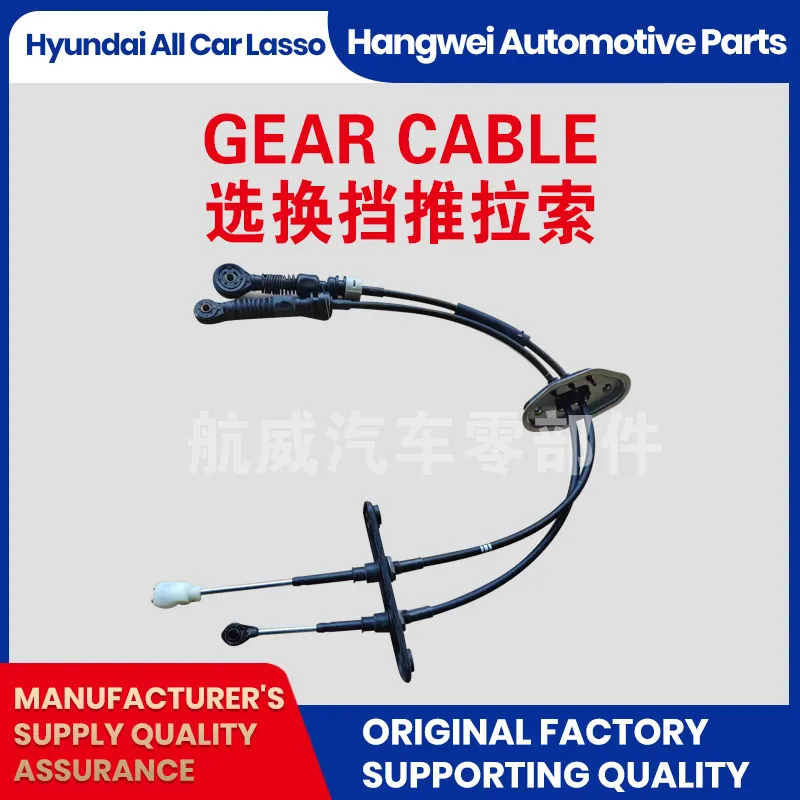Cable System for Gear Linkage Mechanism in Automotive Applications
Understanding Gear Linkage Cables Function, Importance, and Maintenance
The automotive industry is a complex network of interdependent systems, each with its own unique components that ensure optimal performance and safety. One of these components, often overlooked by laypersons, is the gear linkage cable. While it may not have the same aura as the engine or the transmission, the gear linkage cable plays a crucial role in the functionality of a vehicle's manual transmission system. In this article, we will delve into the purpose, significance, and maintenance of gear linkage cables, to highlight their importance in vehicle operation.
What is a Gear Linkage Cable?
A gear linkage cable is a flexible conduit that connects the gear lever inside the vehicle's cabin to the transmission system mounted on the engine. Its primary function is to transmit the driver's command from the gear lever to the transmission, allowing for the selection and engagement of different gears. Gear linkage cables are commonly found in manual transmissions, where the driver needs to change gears manually to control the acceleration and deceleration of the vehicle.
In most vehicles, these cables are made of durable materials designed to withstand mechanical stress and environmental factors such as heat, dirt, and moisture. Due to their relatively simple design and function, gear linkage cables can be often forgotten until they begin to show signs of wear or malfunction.
The Importance of Gear Linkage Cables
The gear linkage cable is pivotal for several reasons. Firstly, it provides the necessary feedback and control to the driver. A smooth and responsive gear change is critical for both driving comfort and safety. If the cable is functioning correctly, it allows the driver to shift gears easily without any significant effort. Conversely, a faulty cable can lead to stiff or erratic gear changes, which might create a dangerous driving situation.
Secondly, the gear linkage cable significantly influences the performance of the vehicle. Proper engagement of the gears directly impacts acceleration, deceleration, and overall power delivery. If the cable is misaligned or damaged, it can result in missed shifts or failure to engage, leading to significant performance issues. In extreme cases, it might even leave the vehicle unable to switch gears altogether.
gear linkage cable

Moreover, gear linkage cables are designed to be adjustable, allowing for precise tuning and calibration of the gear shifting mechanism. This adjustability is essential for ensuring that the gear lever's movement is accurately translated to the transmission, which is particularly important in high-performance or race vehicles.
Maintenance and Signs of Wear
Regular maintenance of the gear linkage cable is essential to ensure its longevity and reliable operation. Routine inspections can help identify potential issues before they escalate. Drivers should be on the lookout for symptoms such as unusual stiffness or a lack of responsiveness in the gear lever, odd noises during gear changes, or an inability to engage certain gears.
If any of these symptoms are present, it may indicate that the gear linkage cable is worn out or damaged. A common preventative measure is to lubricate the cable periodically to reduce friction and increase its lifespan. Additionally, ensuring that the cable is free from dirt and debris can prevent wear and tear, extending its operational life.
In cases where the cable has suffered significant damage, replacement is the safest and most effective solution. Gear linkage cables are generally affordable and relatively easy to replace, making it a practical option for vehicle owners.
Conclusion
In conclusion, gear linkage cables are essential components of manual transmission systems that are critical for smooth and safe vehicle operation. Their role in translating driver input into mechanical action cannot be overstated. For vehicle owners, understanding the significance of these cables, recognizing the signs of wear, and adhering to regular maintenance can enhance both performance and safety. By taking care of this often-overlooked component, drivers can ensure a seamless and enjoyable driving experience, enabling them to focus on the road ahead.
-
Workings of Clutch Pipe and Hose SystemsNewsJun.04,2025
-
The Inner Workings of Hand Brake Cable SystemsNewsJun.04,2025
-
The Secrets of Throttle and Accelerator CablesNewsJun.04,2025
-
The Hidden Lifeline of Your Transmission Gear Shift CablesNewsJun.04,2025
-
Demystifying Gear Cables and Shift LinkagesNewsJun.04,2025
-
Decoding Clutch Line Systems A Comprehensive GuideNewsJun.04,2025
